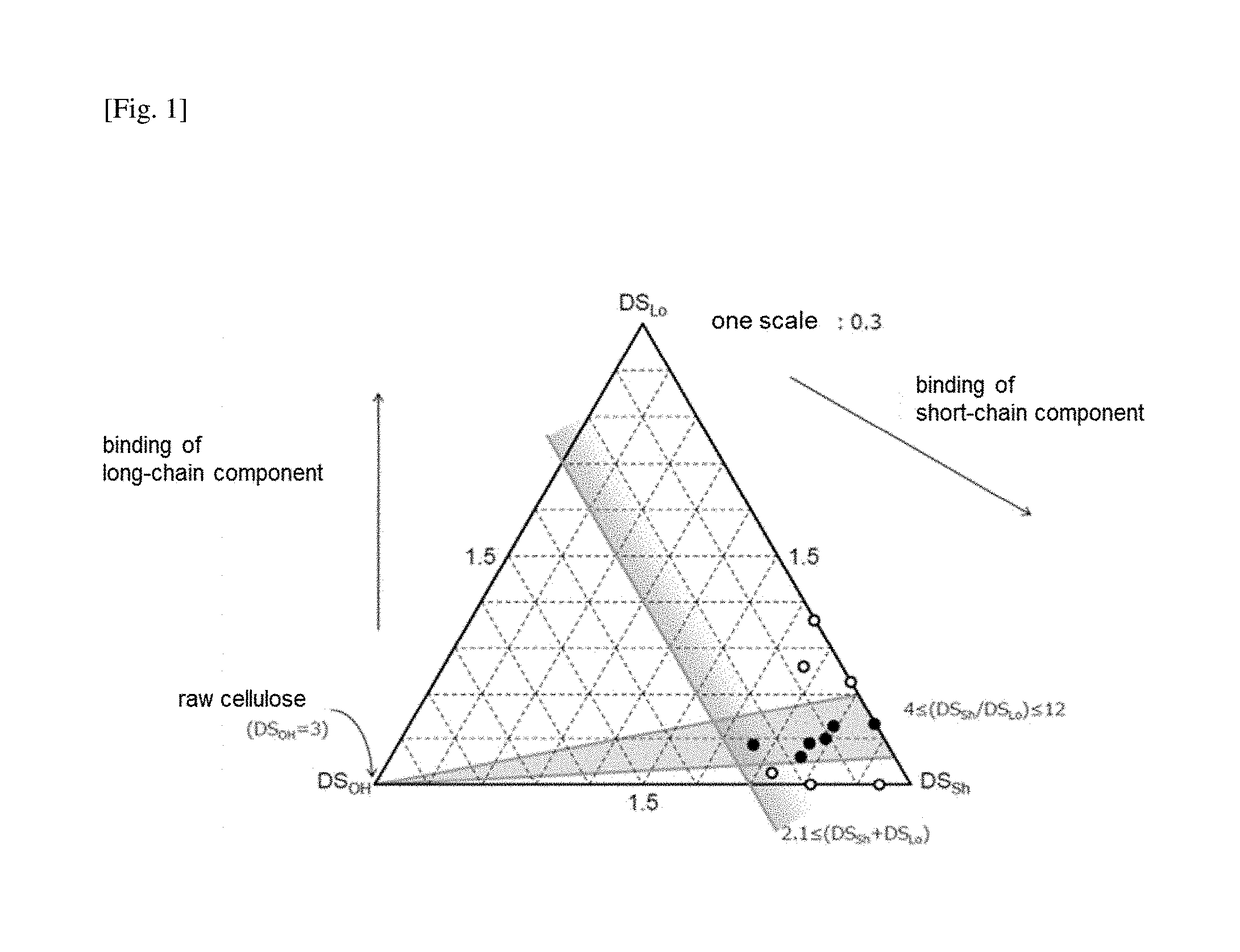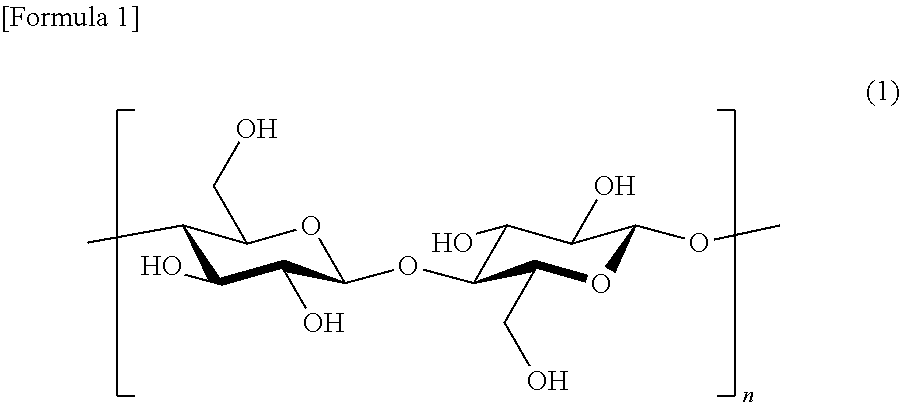Cellulose resin, material for molding, molded body and process for producing cellulose resin
- Summary
- Abstract
- Description
- Claims
- Application Information
AI Technical Summary
Benefits of technology
Problems solved by technology
Method used
Image
Examples
examples
[0157]The present invention will be more specifically described by way of examples below.
example a1
(Example A1) (Cellulose Propionate Stearate)
[0158]After a treatment for activating a cellulose was performed, the cellulose was acylated in a solid-liquid heterogeneous system to obtain a cellulose resin. More specifically, the cellulose resin was prepared as follows.
[0159]Six grams (in terms of dry weight, 37 mmol / glucose unit) of cellulose (derived from a broad-leaf tree, pre-hydrolyzed craft pulp, water content: 8.3%) was cut into pieces having a several cm in size, put in a reactor and dispersed in pyridine (240 ml) in a nitrogen atmosphere and stirred at room temperature overnight. In this manner, the cellulose was activated.
[0160]Thereafter, the solution was cooled up to about 10° C. Stearoyl chloride (5.60 g (19 mmol)) and propionyl chloride (10.96 g (118 mmol)) were previously mixed and put in the reactor.
[0161]The reaction solution was stirred at 90° C. for 4 hours, and then, a 13% aqueous sodium hydroxide solution (23 g) was slowly added dropwise. The reaction solution was...
example a2
(Example A2) (Cellulose Propionate Stearate)
[0213]A cellulose resin (cellulose propionate stearate) (13.3 g (yield 96%)) was obtained in accordance with the same quantity and method as in Example A1 except that the amount of starting propionyl chloride was changed to 10.28 g (111 mmol).
[0214]The sample (cellulose propionate stearate) obtained was subjected to measurement by 1H-NMR in the same manner as in Example A1. As a result, DSLo was 0.30 and DSSh was 2.37.
[0215]This sample was evaluated in the same manner as in Example A1. The results are shown in Table 1.
(Example A3) (Cellulose Propionate Stearate)
[0216]A cellulose resin (cellulose propionate stearate) (14.5 g (yield 98%)) was obtained in accordance with the same quantity and method as in Example A1 except that the amount of starting stearoyl chloride was changed to 7.85 g (26 mmol) and the amount of starting propionyl chloride was changed to 10.28 g (111 mmol).
[0217]The sample (cellulose propionate stearate) obtained was sub...
PUM
| Property | Measurement | Unit |
|---|---|---|
| Temperature | aaaaa | aaaaa |
| Percent by volume | aaaaa | aaaaa |
| Reaction temperature | aaaaa | aaaaa |
Abstract
Description
Claims
Application Information
 Login to View More
Login to View More - R&D
- Intellectual Property
- Life Sciences
- Materials
- Tech Scout
- Unparalleled Data Quality
- Higher Quality Content
- 60% Fewer Hallucinations
Browse by: Latest US Patents, China's latest patents, Technical Efficacy Thesaurus, Application Domain, Technology Topic, Popular Technical Reports.
© 2025 PatSnap. All rights reserved.Legal|Privacy policy|Modern Slavery Act Transparency Statement|Sitemap|About US| Contact US: help@patsnap.com



